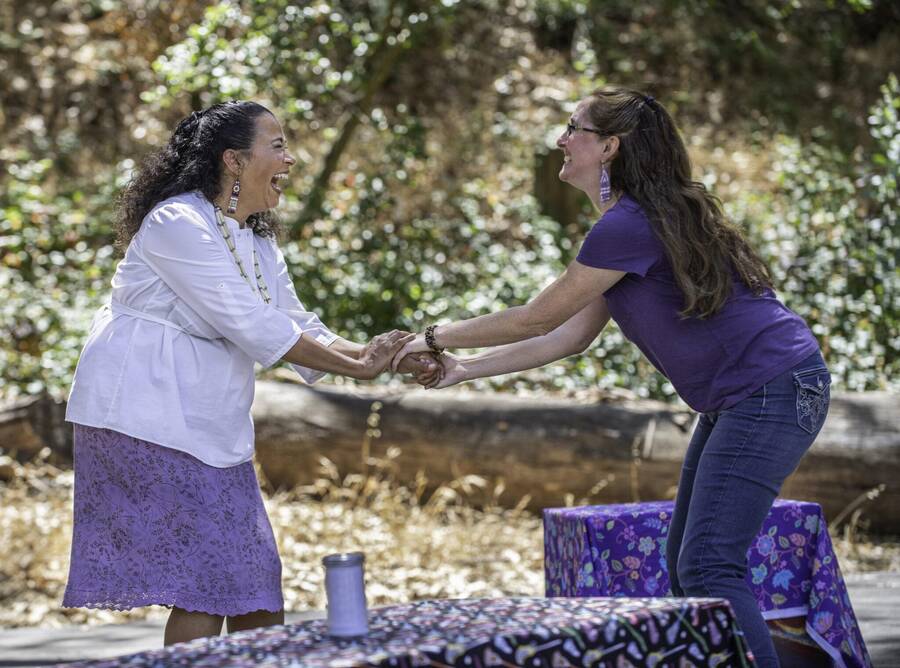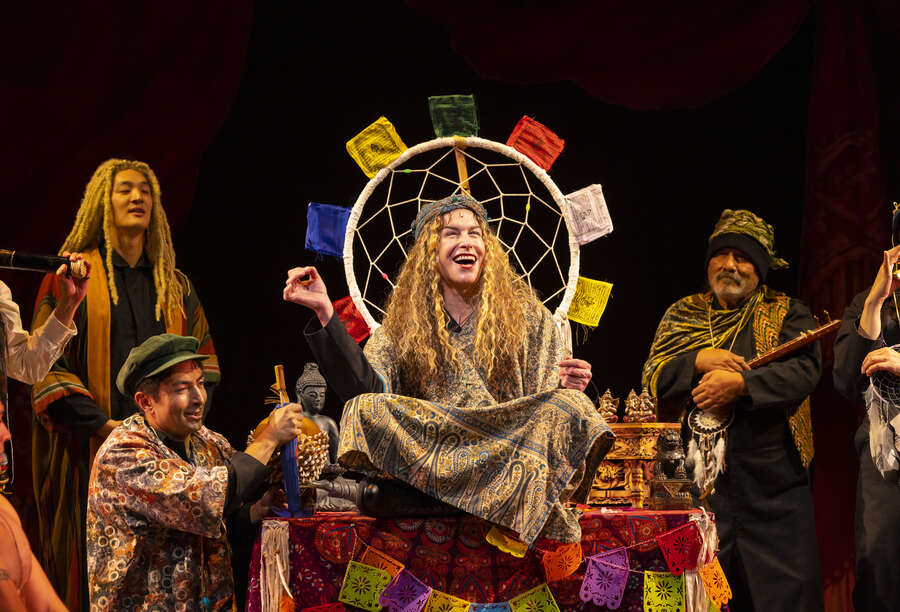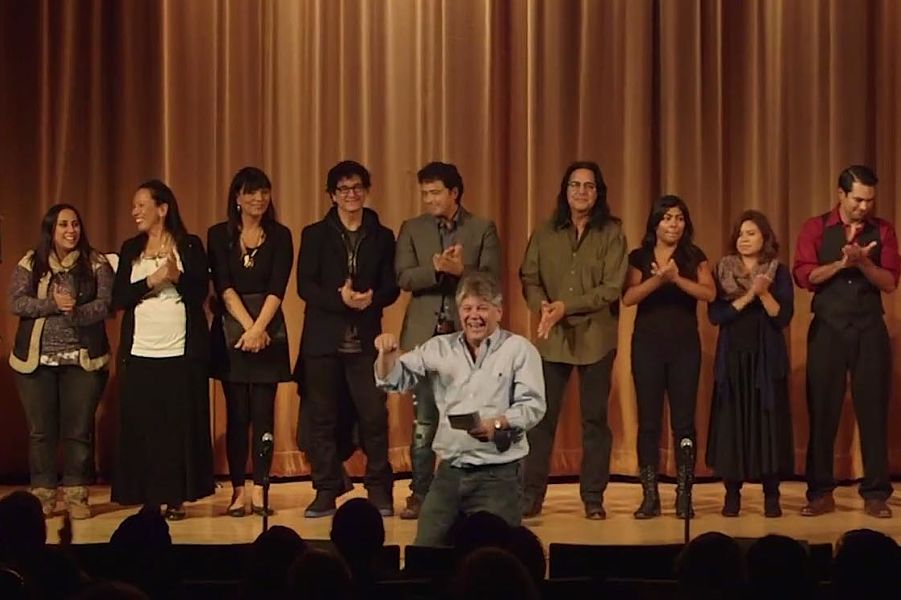How do we build a theatre that is truly inclusive, and develop new work inclusively?
Start doing.
When it comes to Native theatre and working with Native communities, mainstream theatres are terrified of offending anyone. That discomfort means that Native representation in the American theatre ranges from zero to 0.16 percent. Your fear is erasing us. But here’s the good news: All you need to do is let go of your terror of making mistakes; you will learn from those mistakes. Just do something. Because doing nothing is already offensive. Most importantly, don’t stop doing, even when you make a mistake.
Where do you start? Start by taking concrete steps toward your goal.
(Still having trouble with your feelings? Get a good therapist, join a church, or go to the woods every week. But do not withhold opportunities from Native creatives because of your baggage.)
Your To-Do List
Here are some simple things you can do, depending who you are.
Artistic directors: Hire a Native director. Period. Have a plan to hire them for your mainstage season within three years. If you have hiring power and your theatre has not hired a Native director within five years, it will be clear where you stand on this issue.
Do you know how many Native directors were hired in the last year? Me neither. Film has more data than theatre, thanks to the past 16 years of tracking the top 100 films. But to find a Native director of one of the Top 100 films, you have to go back to 1998. Let’s lower the bar to any theatrically released or streaming film in 2022: zero Native directors were hired. Zero. That tracks for theatre: At the TCG Conference plenary in Chicago, when I asked everyone who had hired a Native director to stand up, the only people I saw standing were producers and artistic directors at Native theatres. Only one non-Native theatre said they had hired a Native director in the past 10 years. One.
Playwrights and other artists who are not Native: Find a Native director or Native designer who becomes one of your core collaborators. Recommend them when your work gets picked up. BIPOC playwrights with more than three League of Resident Theaters (LORT) productions have more power than you realize. Real change can happen when we work in solidarity.
Theatre boards: For change to stick, it has to be systemic and happen at all levels. Theatre boards have to right-size their influence to match their competence. Board discomfort and ignorance, hidden behind closed doors or executive sessions, cannot be an excuse to deny jobs to Native artists or Native arts leaders. Work on fixing the nonprofit board model. If you control your own building, make it available for free to Native groups as part of #LandBack movement.
All of you: Collectively, we have power to make change. If every theatregoer in this country did all three of the following things, the needle would move.
- See Native work, especially work by Native women whose erasure and stereotypical representations in media is linked to Missing and Murdered Indigenous Women (MMIW). Invisibility is killing Native people. Make a trip to Native Voices in LA, to New Native Theater in Minneapolis, to Safe Harbors NYC, and keep an eye on New Mexico, home of Two Worlds. Keep track of who’s producing Native work and see it!
- Read plays by Native playwrights. This is easy to do, even if you live far from any place that is producing Native plays. Buy Native writers’ published plays. Recommend them to others.
- Add a Native theatre to your charitable giving. Native nonprofits receive less than 0.4 percent of philanthropic funds, despite being 2.9 percent of the population.
New Models for Play Development
Out of my work with AlterTheater, where I served as artistic director for 17 years, and the wild success of the AlterLab Playwright Residency, I am building a new model for developing new plays—one that incorporates Native health and wellness as well as increases cultural competence among theaters’ staff. This model centers Native communities and Native artists and decenters institutions, while building collaborative relationships among institutions’ artistic staffs.
Something that breaks Native playwrights’ souls is constantly being told to write for non-Native audiences. “But our audiences wouldn’t understand that” is the most unoriginal piece of feedback ever. Artistic staff have said a version of that to every single Native playwright I’ve ever spoken to. Undermining creativity from the beginning is not helpful or productive.
At Native Theater Project (NTP), playwrights start with an individual provocation. Then, in cohorts of five writers, each writes a play over the year. Playwrights meet virtually, and—if I’m able to raise enough money—will gather quarterly in person in Portland, Oregon. In partnership with places like NAYA Family Center, NTP reads pages aloud, and writers bounce ideas off other Native people. The playwrights support each other, holding themselves accountable to their provocation. The residency culminates in a salon of staged readings in Native community centers, for Native audiences. By the end of the year, the playwrights feel confident and solid in the stories they want to tell.
Next, I plan to work with larger theatres, because Native artists need that money. We cannot afford to remain relegated to the smallest stages and the least-funded theatres. That’s where year two begins: Each playwright will join another cohort, comprising a Native theatre, plus two to five additional theatres, each in a different geographic location, all of whom have contributed to the process. Contributions may include paying part of the commissioning fee, or making a commitment for a developmental workshop or a first-look production. Those theatres join NTP and the playwright to continue developing the work over another year. At the end of the year, each of those theatres can be part of a world premiere production, structured in a way that works for all parties.
What theatres lose in this bargain is institutional ownership of a play they co-commission. But the Dramatists Guild has been pushing the field this way since before Todd London’s Outrageous Fortune detailed the parlous economics of the playwriting profession. What the theatre field gains is a more decentralized process, more authentic plays, and the ability to share and leverage the limited new-play development resources now available in our shrinking new-play landscape.
Year two will come with its share of challenges. How, you may wonder, can three to six artistic directors collaboratively develop a new play? ADs are hired for being opinionated—for their singular vision. These year two cohorts will be based on aesthetic similarities and some degree of existing artistic respect. To make this work, artistic directors will need to find their nimbleness, trust in their respect for their peers, and believe that their own artistry and vision can have a deep impact on this process, even without the defined control of past models. With the visionary leadership of Nik Whitcomb, producing artistic director of Bag&Baggage Productions, I am piloting a test of this right now, and the discoveries we make will be implemented on a larger scale (funding permitting) next year.
As someone who’s been AD of a LORT theatre and worked on Broadway, I understand the pressures of producing and have deep compassion for arts leaders who juggle so many responsibilities at this moment. Combining that compassion with my deep belief that we get our best work when we center the playwright, I believe we can, together, create a new model that works better both for Native people and for the American theatre.
Jeanette Harrison is an actor, director, writer, and creative producer who co-founded Alternative Theater Ensemble (AlterTheater) in 2004 and in 2024 began Native Theater Project, in residence at Bag&Baggage Productions.
Support American Theatre: a just and thriving theatre ecology begins with information for all. Please join us in this mission by joining TCG, which entitles you to copies of our quarterly print magazine and helps support a long legacy of quality nonprofit arts journalism.





